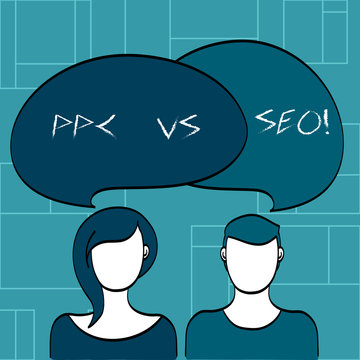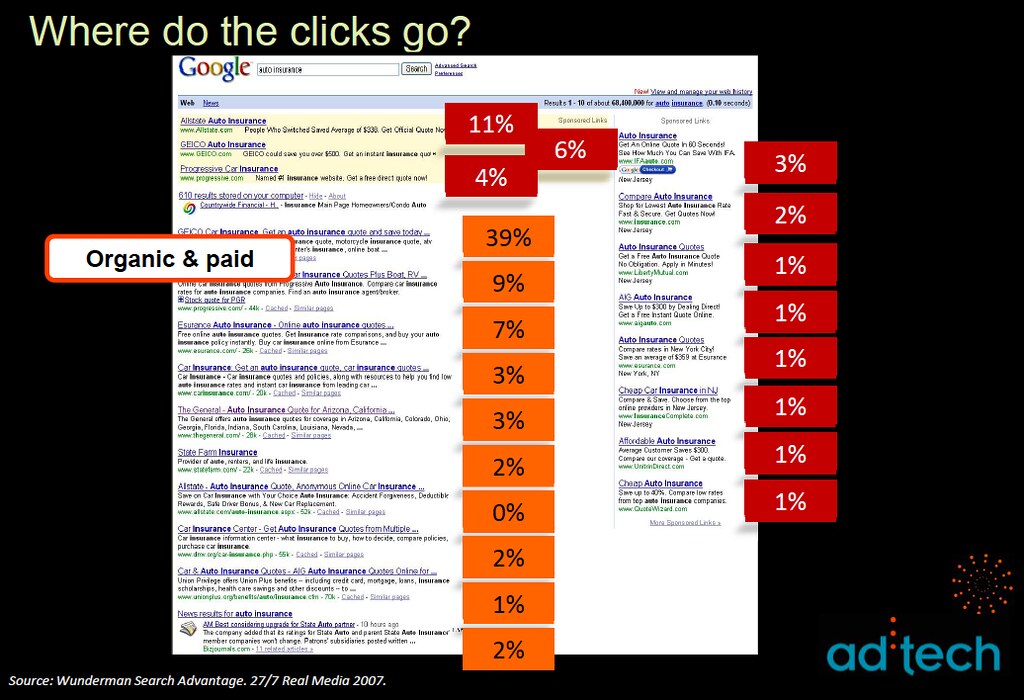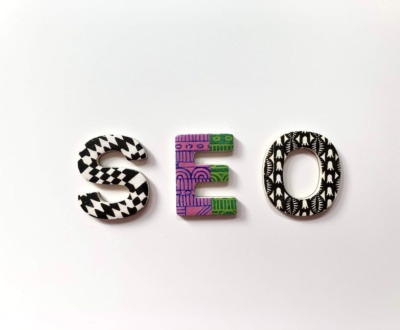Revolutionize Your Marketing Strategy with Google Ads: Empower Your Business Growth
- April 28, 2023
- PPC Advertising
Benefits of Using Google Ads
Google Ads is an effective online advertising platform that can help businesses of all sizes reach their target audience and achieve their marketing goals. Through Google Ads, businesses can create and run ads on Google’s search engine and other Google properties. Here are some of the key benefits of using Google Ads:
-
Increased visibility: With Google Ads, businesses can increase their visibility online and appear at the top of Google’s search engine results pages (SERPs) for their target keywords. This can help businesses reach a larger audience and increase their brand awareness.
-
Targeted advertising: Google Ads allows businesses to create highly targeted ads that are shown to users who are actively searching for products or services that they offer. This can help businesses reach their ideal customers and increase their chances of making a sale.
-
Flexible budgeting: Unlike traditional advertising methods, Google Ads allows businesses to set a budget for their campaigns and only pay when users click on their ads. This can help businesses control their advertising costs and ensure that they are getting the most value for their money.
-
Measurable results: With Google Ads, businesses can track the performance of their ads and measure their return on investment (ROI). This can help businesses identify which ads are performing well and make data-driven decisions to optimize their campaigns for better results.
-
Wide range of ad formats: Google Ads offers a wide range of ad formats, including search ads, display ads, shopping ads, video ads, and app ads. This allows businesses to choose the ad format that best suits their marketing goals and target audience.
Overall, Google Ads is a powerful tool that can help businesses achieve their marketing goals and reach their target audience online. In the following sections, we’ll take a closer look at the different types of Google Ads, the cost of Google Ads, measuring success with Google Ads, best practices, and more.
Types of Google Ads
Google Ads offers a variety of ad formats that businesses can use to reach their target audience and achieve their marketing goals. In this section, we’ll take a closer look at the different types of Google Ads and the strategies businesses can use to optimize them for better results.
Search Ads
Search ads are the most common type of Google Ad and are shown at the top and bottom of Google’s search engine results pages (SERPs). These ads are triggered when users search for specific keywords or phrases that are relevant to the business’s products or services.
To optimize search ads, businesses should focus on:
-
Keyword research: Research and select high-quality keywords that are relevant to the business’s products or services and have a high search volume. Use Google’s Keyword Planner tool to find keyword ideas and estimate their search volume.
-
Ad copy: Create compelling ad copy that includes the target keyword and highlights the business’s unique selling proposition (USP). Use ad extensions, such as callouts and sitelinks, to provide additional information and improve ad relevance.
-
Landing pages: Create landing pages that are relevant to the ad and provide a clear call-to-action (CTA). Ensure that the landing page is optimized for mobile devices and loads quickly.
Display Ads
Display ads are visual ads that are shown on websites, mobile apps, and YouTube videos that are part of the Google Display Network. These ads can include text, images, and videos and can be targeted based on demographics, interests, and behaviors.
To optimize display ads, businesses should focus on:
-
Audience targeting: Use Google’s audience targeting options to reach users who are likely to be interested in the business’s products or services. Create ads that are relevant to the audience’s interests and behaviors.
-
Ad design: Create visually appealing ads that grab the audience’s attention and highlight the business’s USP. Use high-quality images and videos and include a clear CTA.
-
Landing pages: Create landing pages that are relevant to the ad and provide a clear CTA. Ensure that the landing page is optimized for mobile devices and loads quickly.
Shopping Ads
Shopping ads are ads that feature product images, prices, and descriptions and are shown at the top of Google’s search engine results pages (SERPs) when users search for specific products or product categories.
To optimize shopping ads, businesses should focus on:
-
Product feed optimization: Optimize the business’s product feed by providing accurate and up-to-date information about the products, including product titles, descriptions, and prices. Ensure that the product images are high-quality and show the product from multiple angles.
-
Campaign structure: Organize the shopping campaign by product category or attribute to ensure that the right products are shown to the right users. Use negative keywords to exclude irrelevant searches.
-
Bid optimization: Adjust the bids for each product based on its performance and profitability. Use Google’s automated bidding strategies, such as Target ROAS or Target CPA, to optimize bids automatically.
Video Ads
Video ads are ads that appear on YouTube videos and other Google Display Network partner sites. These ads can be skippable or non-skippable and can include a variety of ad formats, such as in-stream ads, bumper ads, and discovery ads.
To optimize video ads, businesses should focus on:
-
Ad targeting: Use Google’s audience targeting options to reach users who are likely to be interested in the business’s products or services. Create ads that are relevant to the audience’s interests and behaviors.
-
Ad design: Create visually appealing ads that grab the audience’s attention and highlight the business’s USP. Use high-quality videos and include a clear CTA.
-
Landing pages: Create landing pages that are relevant to the ad and provide a clear CTA. Ensure that the landing page is optimized for mobile devices and loads quickly.
App Ads
App ads are ads that appear on Google Play, Google Search, YouTube, and other Google Display Network partner sites. These ads can be targeted based on users’ interests, behaviors, and app usage.
To optimize app ads, businesses should focus on:
-
Audience targeting: Use Google’s audience targeting options to reach users who are likely to be interested in the business’s app. Create ads that are relevant to the audience’s interests and behaviors.
-
Ad design: Create visually appealing ads that grab the audience’s attention and highlight the app’s unique features and benefits. Include a clear CTA that encourages users to download the app.
-
App store optimization: Optimize the app’s listing on Google Play by providing accurate and up-to-date information about the app, including the app’s name, description, and screenshots. Ensure that the app is categorized correctly and that the app’s metadata is optimized for keywords.

Google Ads vs. Facebook Ads: Which One Should You Choose?
When it comes to online advertising, Google Ads and Facebook Ads are two of the most popular platforms available to businesses. Both platforms offer unique features and benefits that can help businesses reach their target audiences and achieve their marketing goals. In this section, we’ll compare Google Ads and Facebook Ads and help you determine which platform is right for your business.
The Basics
Google Ads and other Google properties. Businesses can create text, image, and video ads and target them to specific keywords and audiences.
Facebook Ads is a social media advertising platform that allows businesses to display ads on Facebook, Instagram, and other Facebook-owned properties. Businesses can create image and video ads and target them to specific demographics, interests, and behaviors.
Targeting Options
Both Google Ads and Facebook Ads offer a variety of targeting options that businesses can use to reach their target audiences. However, the types of targeting options they offer are different.
Google Ads offers keyword targeting, which allows businesses to target specific keywords and phrases that are relevant to their products or services. They can also use audience targeting, which allows businesses to target audiences based on their demographics, interests, and behaviors.
Facebook Ads offers demographic targeting, which allows businesses to target audiences based on their age, gender, location, and other demographic factors. They can also use interest targeting, which allows businesses to target audiences based on their interests, hobbies, and activities.
Ad Formats
Google Ads offers a variety of ad formats, including text ads, image ads, and video ads. These ads are displayed on Google’s search engine results pages (SERPs) and other Google properties.
Facebook Ads, on the other hand, offers image and video ads that are displayed on Facebook, Instagram, and other Facebook-owned properties. These ads can be placed in users’ news feeds, stories, and other locations.
Cost
The cost of advertising on Google Ads and Facebook Ads varies depending on a variety of factors, including the ad format, the targeting options, and the competition for keywords and audiences.
Google Ads uses a PPC model, which means businesses only pay when someone clicks on their ad. The cost per click (CPC) varies depending on the competition for the keyword and the quality of the ad.
Facebook Ads uses a cost-per-impression (CPM) or cost-per-click (CPC) model, depending on the ad format. The cost per impression (CPM) varies depending on the competition for the audience and the quality of the ad. The cost per click (CPC) varies depending on the competition for the audience and the quality of the ad.
Which One Should You Choose?
The choice between Google Ads and Facebook Ads depends on your business goals and target audience. If you want to reach people who are actively searching for your products or services, Google Ads may be the better choice. If you want to reach people who may be interested in your products or services based on their interests and behaviors, Facebook Ads may be the better choice.
Ultimately, the best approach is to try both platforms and see which one works best for your business. By testing different ad formats and targeting options, you can determine which platform delivers the best results for your marketing goals.
Tips for Creating Effective Google Ads Campaigns
Google Ads can be an incredibly effective way to drive traffic and sales to your website. However, creating effective campaigns can be a challenge, especially if you’re new to the platform. In this section, we’ll provide you with some tips for creating effective Google Ads campaigns.
Define Your Goals
Before you start creating your Google Ads campaigns, it’s important to define your goals. What do you want to achieve with your campaigns? Do you want to drive more traffic to your website, generate leads, or increase sales? Once you’ve defined your goals, you can create campaigns that are tailored to achieving those goals.
Know Your Audience
To create effective Google Ads campaigns, you need to know your audience. Who are you targeting with your campaigns? What are their interests and behaviors? Understanding your audience will help you create ads that resonate with them and drive them to take action.
Choose the Right Keywords
Choosing the right keywords is critical to the success of your Google Ads campaigns. You want to choose keywords that are relevant to your products or services and have a high search volume. Use the Google Ads Keyword Planner to find keywords that are relevant to your business and have a high search volume.
Write Compelling Ad Copy
Your ad copy is what will entice people to click on your ads. You want to write ad copy that is compelling and speaks directly to your target audience. Use language that resonates with your audience and highlights the benefits of your products or services.
Use Ad Extensions
Ad extensions are additional pieces of information that can be added to your ads, such as your phone number, address, and reviews. Using ad extensions can help increase the visibility of your ads and make them more compelling to potential customers.
Monitor and Optimize Your Campaigns
Once you’ve launched your Google Ads campaigns, it’s important to monitor them regularly and make adjustments as needed. Use the data provided by Google Ads to track the performance of your campaigns and make changes to improve their effectiveness.
Conclusion
Creating effective Google Ads campaigns requires a combination of strategy, creativity, and ongoing optimization. By defining your goals, knowing your audience, choosing the right keywords, writing compelling ad copy, using ad extensions, and monitoring and optimizing your campaigns, you can create campaigns that drive traffic, leads, and sales to your website.

Common Mistakes to Avoid When Creating Google Ads Campaigns
Creating effective Google Ads campaigns can be challenging, especially if you’re new to the platform. In this section, we’ll highlight some common mistakes to avoid when creating Google Ads campaigns.
Not Defining Your Goals
One of the most common mistakes businesses make when creating Google Ads campaigns is not defining their goals. Without clearly defined goals, it’s difficult to create campaigns that are tailored to achieving those goals. Take the time to define your goals before creating your campaigns.
Not Knowing Your Audience
Another common mistake businesses make is not knowing their audience. Understanding your audience is critical to creating ads that resonate with them and drive them to take action. Take the time to research your target audience and create ads that speak directly to them.
Using Broad Match Keywords
Using broad match keywords can be a costly mistake. Broad match keywords can trigger your ads to show for unrelated searches, which can result in wasted ad spend. Instead, use exact match or phrase match keywords to ensure your ads are shown to people who are searching for exactly what you offer.
Writing Poor Ad Copy
Your ad copy is what will entice people to click on your ads. Writing poor ad copy can result in low click-through rates and wasted ad spend. Take the time to write compelling ad copy that speaks directly to your target audience and highlights the benefits of your products or services.
Not Using Ad Extensions
Ad extensions can help increase the visibility of your ads and make them more compelling to potential customers. Not using ad extensions can result in missed opportunities to drive traffic and sales to your website. Take advantage of ad extensions to make your ads more effective.
Not Monitoring and Optimizing Your Campaigns
One of the biggest mistakes businesses make is not monitoring and optimizing their Google Ads campaigns. Without regular monitoring and optimization, it’s difficult to improve the effectiveness of your campaigns and maximize your ROI. Use the data provided by Google Ads to track the performance of your campaigns and make changes to improve their effectiveness.
Conclusion
Creating effective Google Ads campaigns requires careful planning, ongoing optimization, and a willingness to learn from mistakes. By avoiding common mistakes like not defining your goals, not knowing your audience, using broad match keywords, writing poor ad copy, not using ad extensions, and not monitoring and optimizing your campaigns, you can create campaigns that drive traffic, leads, and sales to your website.

Ready to Start Your Google Ads Campaigns?
Now that you have a better understanding of how Google Ads works and some tips for creating effective campaigns, it’s time to get started! With the right strategy, you can drive traffic, leads, and sales to your website and grow your business.
If you need help getting started with Google Ads, be sure to check out our other great content. We offer a wide range of resources to help you get the most out of your Google Ads campaigns, including:
- Beginner’s Guides to Google Ads
- Tips for Writing Effective Ad Copy
- Best Practices for Keyword Research
- Strategies for Optimizing Your Campaigns
We also offer expert Google Ads management services to help you get the most out of your campaigns. Our team of experienced professionals can help you create and manage campaigns that drive results and maximize your ROI.
So what are you waiting for? Start your Google Ads campaigns today and take your business to the next level!
FAQ
Who can use Google Ads?
Anyone can use Google Ads to advertise their business.
What types of ads can I create with Google Ads?
With Google Ads, you can create search, display, shopping, video, and app ads.
How much does it cost to use Google Ads?
The cost of Google Ads varies depending on your budget and competition for your keywords.
Who sees my Google Ads?
Your Google Ads are shown to people who are actively searching for the products or services you offer.
What if my ads aren’t getting clicks?
Try optimizing your ad copy, targeting, and bid strategy to improve the performance of your ads.
How can I measure the success of my Google Ads campaigns?
Use Google Analytics to track conversions and other key metrics to measure the success of your campaigns.
What if I don’t have time to manage my Google Ads campaigns?
Consider hiring a professional Google Ads management service to manage your campaigns for you.
About us and this blog
We are a digital marketing company with a focus on helping our customers achieve great results across several key areas.
Request a free quote
We offer professional SEO services that help websites increase their organic search score drastically in order to compete for the highest rankings even when it comes to highly competitive keywords.






Pingback: Revolutionize Your Marketing Strategy with Search Engine Advertising: The Ultimate Guide - SEO Butler